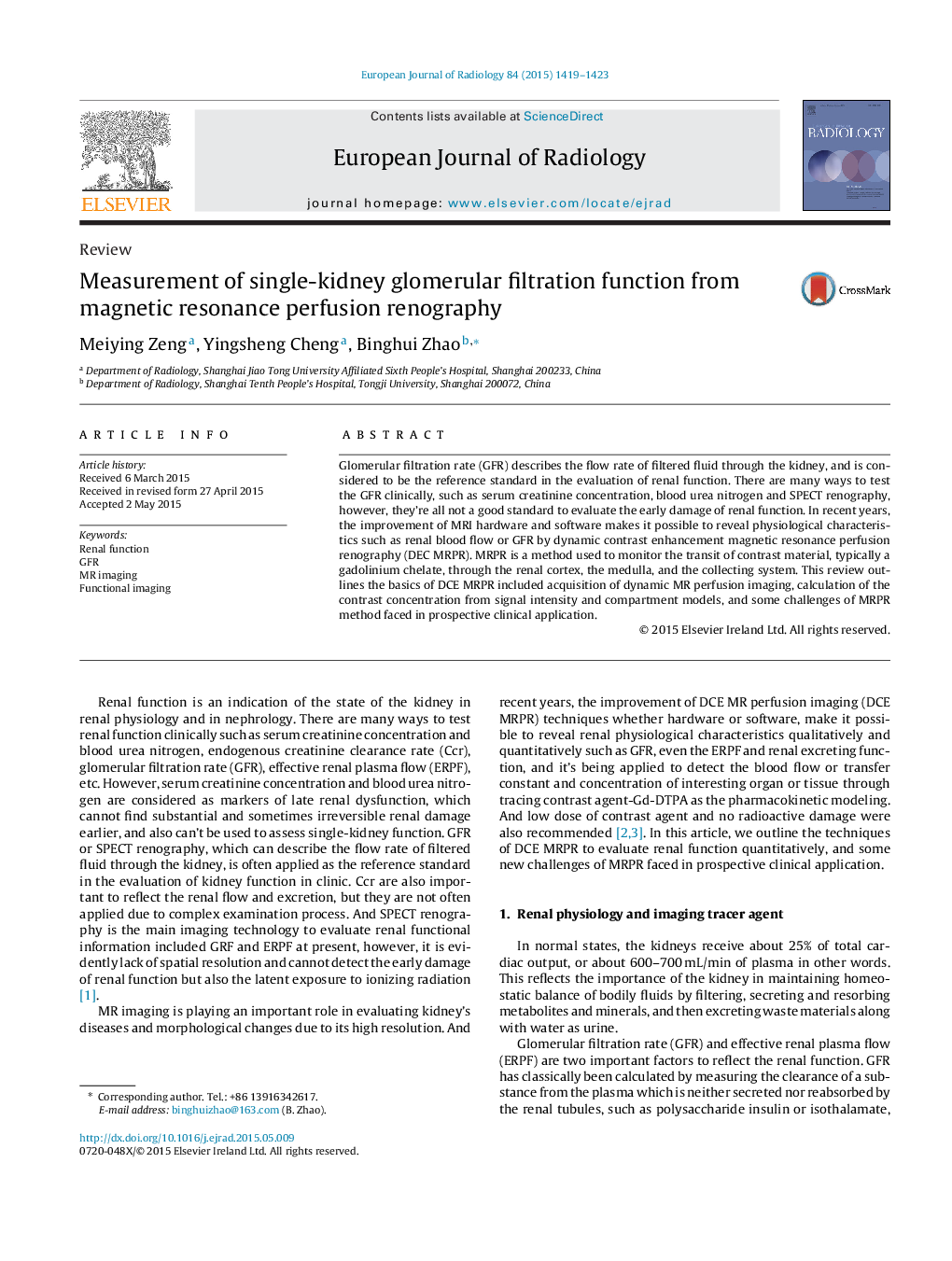| Article ID | Journal | Published Year | Pages | File Type |
|---|---|---|---|---|
| 6243308 | European Journal of Radiology | 2015 | 5 Pages |
Abstract
Glomerular filtration rate (GFR) describes the flow rate of filtered fluid through the kidney, and is considered to be the reference standard in the evaluation of renal function. There are many ways to test the GFR clinically, such as serum creatinine concentration, blood urea nitrogen and SPECT renography, however, they're all not a good standard to evaluate the early damage of renal function. In recent years, the improvement of MRI hardware and software makes it possible to reveal physiological characteristics such as renal blood flow or GFR by dynamic contrast enhancement magnetic resonance perfusion renography (DEC MRPR). MRPR is a method used to monitor the transit of contrast material, typically a gadolinium chelate, through the renal cortex, the medulla, and the collecting system. This review outlines the basics of DCE MRPR included acquisition of dynamic MR perfusion imaging, calculation of the contrast concentration from signal intensity and compartment models, and some challenges of MRPR method faced in prospective clinical application.
Related Topics
Health Sciences
Medicine and Dentistry
Radiology and Imaging
Authors
Meiying Zeng, Yingsheng Cheng, Binghui Zhao,
